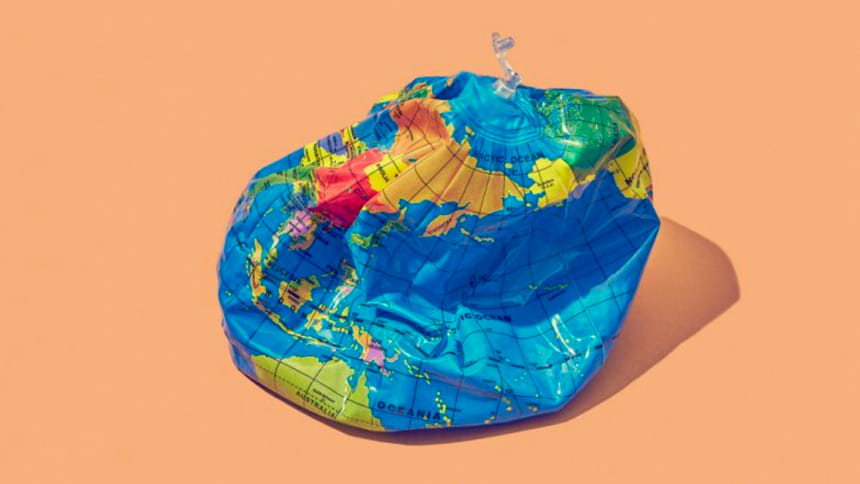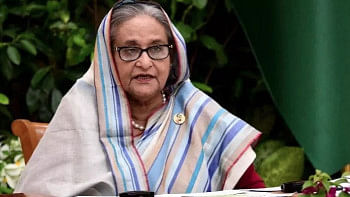Covid-19 And The Economy: Where on the path to recovery are we?

The year 2020 has been a disappointment due to the Covid-19 pandemic. And just one of its many downsides can be seen on the global economy which, according to the International Monetary Fund (IMF), is set to contract by 4.9 percent in 2020—with the IMF saying in its June report that this "baseline projection rests on key assumptions about the fallout from the pandemic."
The Indian economy is estimated to shrink by 10.3 percent, Sri Lanka's by 4.6 percent and Pakistan's by 0.4 percent. Meanwhile, the IMF expects Bangladesh will defy the odds and has estimated its GDP will increase by 3.8 percent—which is pretty incredible.
Despite the good news, per capita income in Bangladesh is expected to fall by 2.9 percent—according to the Bangladesh Institute of Development Studies, the pandemic has led to 13 percent of people losing work and a decrease in household income, pushing 16.4 million new people under the poverty line. Much of the damage has been done in the industrial and services sectors. In recent years, the industrial sector has emerged as a major driver of the economy, especially in creating jobs. Between 2010 and 2019, average growth in manufacturing was more than 10 percent and was 14.2 percent in 2019. This year, however, that sharply declined to 5.84 percent.
Moreover, foreign direct investment (FDI) to Bangladesh declined by 31.79 percent to USD 1.15 billion in the first half of the year due to Covid-19. There is no dearth of other data showing how detrimental it has been for the economy. However, perhaps none of them fully capture the economic suffering, nor its resulting human suffering. Yet, one can still say that Bangladesh is doing better than much of the world at this moment of crisis—for example, global FDI flows fell 49 percent to USD 399 billion during January-June 2020. And as mentioned earlier, growth globally has been hampered much more severely than in Bangladesh.
With a month and a half left in the calendar year, it seems that the global economy is finally ready to bounce back, and that can only be good for Bangladesh. Additionally, the Bangladesh economy is also showing signs of recovery. Exports, for example, plummeted in March-April and stayed there in May. By July and August, however, it had returned to its corresponding period in 2019. And remittances, too, have done very well, working as a "countercyclical factor", according to Dr Ahsan Mansur, executive director of the Policy Research Institute of Bangladesh.
The bad news is that the recovery is still in its early stage and is extremely vulnerable—especially to a potential second wave of Covid-19, which experts fear could derail Bangladesh's feeble economic recovery so far, reduce fiscal space and constrain public expenditure, as well as prove to be exceedingly harsh on the poor and low-income groups.
According to experts, the lockdown enforced by the government earlier in the year wiped out half of the GDP growth potential of the last fiscal year, which ended in June, as well as undid the gains made by Bangladesh in terms of poverty reduction in the last couple of decades. "The second wave would be more painful than the first one and it would rub salt into the wound," if we are not careful, according to Zahid Hussain, a former lead economist of the World Bank's Dhaka office. Therefore, he believes it to "be a wise strategy for the government to avoid the second wave instead of looking at whether the economy can bear it or not."
And he isn't the only one. Dr Fahmida Khatun, Executive Director of the Centre for Policy Dialogue, said that a significant second wave would further delay any economic recovery and another round of low business activity and the resultant low income from businesses would reduce tax collection of the National Board of Revenue. This, "in turn, will reduce the fiscal space of the government and may constrain the government's expenditure."
For that reason, it is crucial for the government to take every precautionary measure to avoid a second wave. This includes awareness campaigns so that people continue to follow all the necessary health and safety rules. The government must also equip hospitals with every facility needed to provide good healthcare to people. Only recently, this newspaper reported how the authorities are yet to equip all hospitals with central oxygen systems—despite planning to install them months ago. This type of attitude will not do. The government needs to be proactive in trying to prevent the disease, instead of focusing on its symptoms.
From the economic side of things, the government has already taken steps to counter the backward slide. It has started 19 stimulus packages worth about USD 12 billion—accounting for 3.7 percent of GDP—that are designed to help export-oriented industries, shipment credit, the agricultural sector and low-income groups, including farmers and micro and small enterprises. However, except for the RMG sector, none of the other sectors have been able to reap their benefits satisfactorily. The government needs "to find out why the stimulus packages for the CMSMEs failed to deliver the expected results," according to Hossain Zillur Rahman, executive chairman of the Power and Participation Research Centre, and take appropriate measures to ensure that every penny of public money is well spent—especially given the lack of manoeuvrability that the government has in terms of fiscal space.
The bad news is that the path to recovery is a long and grinding one. The good news is that the worst is perhaps behind us—if we are disciplined and diligent in our work.
Eresh Omar Jamal is a member of the editorial team at The Daily Star.
His Twitter handle is: @EreshOmarJamal

 For all latest news, follow The Daily Star's Google News channel.
For all latest news, follow The Daily Star's Google News channel. 



Comments